Floor Screeding Otford Kent (TN14): A professional floor screeder can help to install under floor heating, level a damaged or uneven floor or assist with renovations on your Otford home or business premises, when necessary. To provide a level foundation for you final flooring material, a screed is used to generate a smooth floor on top of a rough concrete sub-base. The screed is a crucial process to guarantee a high quality and durable finish to the entire floor surface.
FLOOR SCREEDING CONTRACTORS OTFORD
Whatever size or shape of room you're remodeling, a local screeding contractor in Otford will be able to supply the experience and proper working methods to establish a perfect base for your floor. To determine the correct form of screed you need, and the best way to install it, they will do a proper assessment of your project.
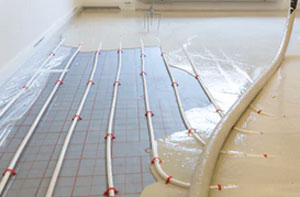
It might be a requirement, contingent on the proposed use of the area in question, for a structural engineering survey to abide by building regulations on flex strength, point loadings and load requirements of the screed floor.
A qualified and skilled work force is essential to a successful result and will extend the life of your floor through the use of the correct type of screed for your room's anticipated purpose. There are numerous types of screeding and selecting the correct mix and installation method is essential if you are to create a high quality floor that is fit for purpose and long-lasting.
Before deciding on a floor screeding company from those operating in the Otford area, ask to what standard of finish they're basing their price quote, and also ensure you get multiple quotes. For domestic homes a quote will usually be given for a Surface Regularity (SR) level of SR1 or SR2. Each of the 3 SR levels provide different levels of finish, with SR1 being the highest quality, with the least amount of deviation over the surface area. An SR2 or SR3 level may mean there will be ridges or flat spots that could cause issues when putting down your final flooring materials.
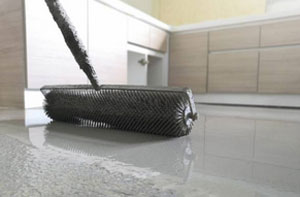
British Standards BS8204 sets down the regulations and guidelines that all Otford screeding companies is obliged to follow, and if working with specialist screeding solutions, (Cemfloor, Gypsol, Flowcrete etc), they should be accredited by the manufacturers as being skilled and trained in their use. A company holding such accreditation proves that they've been trained and assessed in using these products and can provide a top notch service in all areas of their installation.
Otford commercial screeders may be involved in the screeding of floors in warehouses, factories, schools, boutiques, hospitals and shops.
TYPES OF SCREED
Standard Screeds - A mix of cement and sand which is okay for basic domestic use. The standard screed is a mixture of five parts sand to one of cement. Once its been laid this 5:1 ratio will dry at a rate of one millimetre each day.
Liquid or Self-Levelling Screeds - A latex and cement formula which can produce the highest standard SR1 finish. This self-levelling compound provides a clean and level surface over a rough substrate or damaged floor to allow all flooring materials to be laid. They can be as little as 1mm in depth, and due to the latex polymers, will still provide high strength.
Polymer Screeds - An extremely high strength solution where a reduced thickness is required. Maker's guidelines for setting times differ across the various product ranges.
Fibre Reinforced Screed - The favourite choice of professional contractors for use in combination with underfloor heating systems. The improved strength and flexibility offered by the fibres in this screed help protect the resulting floor from thermal shrinkage and cracking. It has a setting rate of 1mm per day.
Industrial and Heavy Duty Screed - A screed designed for high load and heavy traffic areas where maximum strength and durability is vital.
Advanced Drying and Fast Drying Screeds - As the name suggest, this screed dries quickly and allows you to use the screeded area much sooner. The majority of the fast or advanced drying screeds are fibre reinforced and are appropriate for a wide range of projects where the faster curing rate of 3-7mm/day is a welcome advantage.
SCREEDING PREPARATION AND INSTALLATION
Screeding companies will need to prepare the area before proceeding with any other work so as to ensure a hard wearing and quality screed flooring. It's vital that any contaminants such as grease, paint, debris or oil is removed from the floor surface before laying any screed, since these can affect the adhesion capability that a good quality floor screed demands.
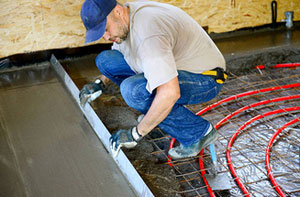
If cleansing products have been used it is crucial to remove any residues of detergent or soap, and allow the floor surface to dry naturally. It is necessary to fix any crevices or cracks in the surface to avoid them being visible and "travelling" up into the freshly screeded floor. A decent Otford screeding contractor will pick up on such issues during a site survey and ensure all preparations are completed before applying the next steps in the floor screeding process.
Before any screeding can be poured a damp proof membrane (DPM) will have to be put down to shield the screed and final flooring from moisture. Different thicknesses of polythene sheeting may be used as a damp proof membrane and also serve as a buffer for the screed and any insulation panels.
If the area where you live is at risk from radon gas then one additional barrier is necessary to stop this harmful gas from entering from the ground. A simple airtight membrane may be enough in areas with low radon measurements, but in more serious cases there might need to be a more sophisticated ventilation and extraction system to block any harmful radon gases.
Once these steps have been taken the screeding company will put on a primer or sealer to the prepared base surface. These sealers and primers will ensure that the screed bonds properly to the floor base and help to produce a quality finished floor. These materials need certified technicians to apply them in the correct ratios by using airless sprays and other custom-built equipment.
Underfloor heating can now be installed and tested before the screed is poured. Insulation panels will be laid out and the cabling and heating pipes will be firmly mounted so there's no movement while the screed is being poured. Warmth is evenly spread across the floor in a skillfully fitted underfloor heating system, and along with it being an efficient method of heating, it's a good choice for the majority of Otford renovation projects.
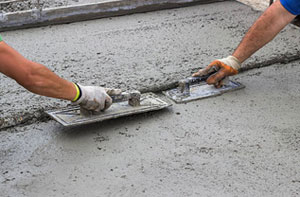
If you're not fitting under floor heating the screed will now be mixed and prepared on site and laid. The particular requirements of the room will dictate the sort of screeding used. For quick drying and advanced screeds there'll be at least 24 hours delay before it is able to be walked on, and a further Three days minimum before any flooring material can be laid over it. Manufacturer's drying guidelines for heavy duty and standard screeds must be followed so as to achieve a quality finish and end up with a stable and long lasting surface.
You can evaluate the SR standard of the completed screed once it's hard enough to walk on. Using a two metre straight-edge the surface is checked for any dips, deviations and ridges in the screed surface.
- SR1 - SR1 is the best specification and permits just 3mm of deviation from the straight-edge.
- SR2 - SR2 is for normal standard floors in industrial and commercial projects and can deviate from the straight-edge by as much as five millimetres.
- SR3 - SR3 is basic utility standard where a perfect quality finish isn't needed. This level can have a maximum permissible deviation depth of 10 millimetres.
It might also be necessary for a structural engineer to conduct a soundness test. The testing will make certain that your newly laid screeded surface is suitable for the load point requirements set down in the site survey. The screeding could be given what is known as a drop hammer test to measure strength and flexibility in various areas. Only qualified structural engineers heeding the British Standards BS8204 regulations are allowed to perform these tests and sign off on the structural safety of the screeding. (Tags: Screeding Otford, Floor Screeding Services Otford, Floor Screed Otford, Floor Screeding Otford).
Floor screeding is available in Otford and also in: Twitton, Shoreham, Noah's Ark, Sundridge, Badgers Mount, Cotman's Ash, Well Hill, Knockholt, Kemsing, Sevenoaks, Halstead, Chelsfield, Dunton Green, Heaverham, Romney Street, and in these postcodes TN14 5QW, TN14 5LS, TN14 5NN, TN14 5LX, TN14 5QT, TN14 5JZ, TN14 5PX, TN14 5LQ, TN14 5JG, and TN14 5PQ. Local Otford floor screeders will likely have the postcode TN14 and the telephone dialling code 01959. Verifying this will make certain that you access local screeding. Otford property owners are able to benefit from these and many other flooring related services. To get estimates for floor screeding, you can simply click on the "Quote" banner.
Damp Proof Membranes
A damp proof membrane (DPM) is a material that's used in construction to guard against moisture infiltration into foundations, floors, and walls. It is usually made from plastic or polythene and acts as a barrier to stop rising damp, which can damage buildings over the years. A damp proof membrane is crucial for shielding a property from moisture-related problems such as decay, structural decline, and mould.
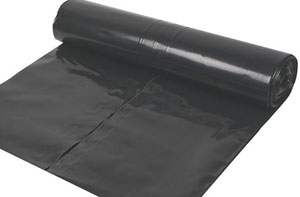
Frequently found in new buildings, Damp proof membranes can also be installed when refurbishing a property. To block moisture from penetrating, they are usually installed beneath concrete floors or within walls. By doing so, the interior of a building remains dry, thus preventing problems such as damp patches, warped wooden floors, and peeling paint.
Different kinds of DPMs are available based on the particular needs of each property. While some DPMs are self-adhesive, others require a bonding agent for installation. The selection of a suitable membrane will rely on factors such as the potential for moisture damage, the form of construction, and the building's location.
All in all, an easy and effective solution to moisture issues is provided by a damp proof membrane. A durable and long-lasting barrier is created, keeping homes and buildings in Otford protected from damp's harmful effects. Installing a DPM is a crucial step in safeguarding the structure from moisture, whether you're building a new property in Otford or renovating an existing one. (Damp Proof Membranes Otford)
What Does Screeding Do?
Within construction projects, screeding serves several critical purposes:
- Smoothing and Levelling.
- Stability and Structural Integrity.
- Surface Protection.
- Underfloor Heating System Support.
- The Even Distribution of Loads.
- Improving Sound and Thermal Insulation.
- Compatibility with Floor Finishes.
- Subfloor Corrections.
In a nutshell, screeding assumes a vital role in the creation of a level, stable and durable floor surface. By maintaining a solid foundation, it enables the floor finish to uphold its aesthetics and quality, and endure the demands of everyday use for many years to come.
Granolithic Screeding
Granolithic screeding refers to a kind of flooring that consists of a mixture of cement, aggregate and sand. It is applied in a relatively thin layer and then smoothed to provide a durable, hard-wearing and seamless surface. It is frequently used in industrial, commercial and public buildings where heavy traffic is expected.
The resulting flooring is easy to clean, hard-wearing and slip-resistant, making it ideal for use in areas with high foot traffic, such as factories, shopping centres and schools.
Granolithic screeding is typically applied over a concrete base, and the surface is generally treated with a curing compound to ensure it sets correctly. Once cured, it creates a seamless floor with a hard, smooth surface that is resistant to wear and tear. It's also resistant to water and chemicals, which makes it perfect for use in environments where there's a risk of spills or exposure to harmful materials.... READ MORE. (Tags: Granolithic Floor Screeding Otford, Granolithic Screeding Otford, Granolithic Screeds Otford)
Screed Reinforcement
Screed reinforcement improves the durability and strength of concrete screeds by reinforcing them. The creation of level surfaces involves applying thin and flat layers of concrete known as screeds to a base layer. While commonly used in building projects for flooring, they can also be utilised as a finishing layer for walls and ceilings.
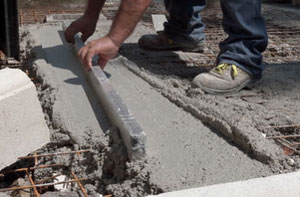
To prevent cracking and enhance strength, reinforcement materials like steel mesh, fibres or wire are included in the screed mixture during installation. This reinforcement improves the surface's ability to resist abrasion, thermal changes and impact, while also ensuring that weight and load are evenly distributed.
To avoid displacement over time and ensure consistent distribution throughout the screed, the reinforcement must be properly installed, which is vital. The use of screed reinforcement allows screeding specialists to make sure that their projects will stand the test of time and provide a functional, high-quality surface for years to come.
Latex Floor Screeds Otford
When a level of flexibility is required in the surface of a floor you may find that the employment of a latex self-levelling screed will be an advantage. Usually coming in two parts, latex screeds comprise a cementitious powder and a liquid latex additive. The liquid latex part replaces the water which would typically be used in a screed mix, and is quicker drying and far more flexible than standard screeds.
Used in the levelling of sub-floors, this latex product provides a surface for the laying of the final floor finish. Appropriate for sub-floors of asphalt, wood, quarry tiles, concrete and sand/cement, this screed gives the ideal surface for the application of flooring adhesives that is resilient and smooth. If your sub-floor has a bit of movement in it, this type of floor screed will still produce a flexible, crack-free finish, onto which your chosen floor coverings can be laid.
When using a "floating" screed, i.e. when a screed is being laid on the top of a layer of either acoustic or thermal insulation, screed depths of 50 to 75 millimetres may be needed, and latex flooring screeds aren't suitable for this purpose.
Screed Floor Sealing Otford
Sealing screed floors is an important process performed by professional screeders to protect and enhance their durability. Creating a smooth, level surface ideal for flooring, screed is made from a mix of cement and sand. Sealing is recommended, however, to maintain its appearance and integrity. Providing a protective barrier against stains, moisture and wear, a good quality sealant will be applied by a professional to penetrate the screed.
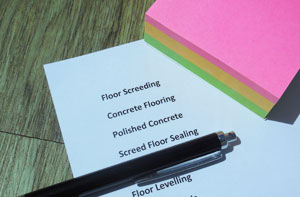
A thorough cleaning of the screed floor to remove any dirt, debris or dust marks the beginning of the sealing process. After the floor is dry and clean, the professional evenly applies the sealant across the surface. This makes certain that the sealant covers all areas, filling in any small pores or cracks. Generally, the sealant requires time to dry and completely cure, creating a durable and long-lasting protective layer.
Having a professional seal your screed floor not only extends its lifespan but also enhances its appearance. Giving the floor a smooth, polished finish, the sealing process makes it simpler to clean and maintain. A sound investment for both domestic and commercial properties, sealing a screed floor also helps to avoid damage from heavy foot traffic and spillages. (Screed Floor Sealing Otford)
Screed Floor Removal Otford
The removal of screed floors is a crucial process in construction and renovation. It is used to strip away existing screed layers from floor surfaces. The preparation of the surface for new flooring or other alterations is facilitated by this essential procedure, which is required for renovating or upgrading a floor.
This complex task can be effectively and safely completed by professional contractors who've got the experience and expertise in screed floor removal. The old screed can be eliminated safely and successfully thanks to their experience, paving the way for a new lease of life for your floor. This fresh start is valuable for changes in design, repairs or upgrades, amongst other things.
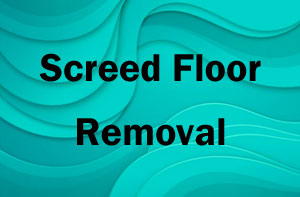
Specialist techniques and equipment are used to remove screed floors, tailored to the particular task. Considering the type, thickness, and the applied surface of the existing screed is imperative. Such attention to detail ensures that the removal is carried out effectively, with minimal damage to the underlying structure.
One of the main benefits of removing screed floors is the opportunity to address any underlying issues that might have developed over the years, which is an important factor to consider. If the old layer of screed is uneven, damaged, or compromised, its removal allows for a detailed examination of the substrate. This examination enables screeding specialists to address any structural challenges and ensure that the substrate is ready for new flooring materials.
In addition to that, the removal of screed flooring forms an important preparatory phase in the installation of underfloor heating systems in Otford. By eliminating the existing screed, contractors can facilitate a surface that is both clean and level, suitable for heating element installation. This approach facilitates an effective and efficient underfloor heating setup, thereby increasing the space's energy efficiency and comfort.
In terms of sustainability, the removal of screed flooring aligns with the principles of reusability and waste reduction. The extracted screed can often be repurposed or recycled for other construction projects, reducing the environmental impact of the removal process.
In brief, screed floor removal is a crucial and intricate process in renovation and construction. Negotiating the challenges of of removing old layers of screed while ensuring the safety and integrity of the fundamental structure requires the expertise of professional flooring contractors. In a range of different settings in Otford, screed floor removal contributes to the creation of efficient, hard-wearing, and aesthetically pleasing flooring solutions by providing a fresh, new start for the floor. (50505 - Screed Removal Otford)
Otford Screeding Related Tasks

There are a whole host of tasks that can be accomplished by your local Otford floor screeding company including resin floor screeding, acoustic flooring, final floor finishes, screed reinforcement, unbonded screed, floor moisture testing services, wet room floors, screed floor removal, monolithic floor screeding, floor renovation in Otford, sand and cement screed, concrete pumping, lightweight floor screeding, floor preparation, sand floor screeding, school floor screeding, screed flooring, floor screeding quotes in Otford, thin bed floor screeding, granolithic floor screeds , underfloor insulation, floor resurfacing, damp proof membranes, shop screeding, garage floor screeding in Otford, underfloor heating installation, acid etching concrete, rapid curing floor screeds, floor screeding, professional floor levelling services, and lots more floor screeding tasks. These are just a small portion of the tasks that are performed by those specialising in floor screeding. Otford providers will be delighted to keep you abreast of their entire range of floor screeding services.

Other Trades Otford: Naturally, when you are doing home improvements and repairs in Otford, you are likely to be in need of all kinds of different tradesmen and together with screeding in Otford, you may also need a carpet fitter in Otford, a bricklayer in Otford, garage conversion in Otford, an underfloor heating specialist in Otford, laminate flooring in Otford, a carpenter/joiner in Otford, an odd job man in Otford, solar panel installation in Otford, rubbish removal in Otford, SKIP HIRE Otford, a plasterer/renderer in Otford, a flooring specialist in Otford, solid wood flooring in Otford, and other different Otford tradesmen. To make enquiries and get quotes, simply click on the highlighted links.
Floor Screeding Near Otford
Also find: Heaverham floor screeding, Chelsfield floor screeding, Badgers Mount floor screeding, Romney Street floor screeding, Sevenoaks floor screeding, Well Hill floor screeding, Noah's Ark floor screeding, Halstead floor screeding, Cotman's Ash floor screeding, Twitton floor screeding, Dunton Green floor screeding, Kemsing floor screeding, Shoreham floor screeding, Knockholt floor screeding, Sundridge floor screeding and more. Firms who do screeding can be found in all of these towns and villages. These seasoned specialists possess the know-how and expertise necessary to deliver high-quality screeding solutions. For both residential and commercial properties, they're skilled in screeding and make sure that the task is executed to the highest possible standards. Local home and business owners can get screeding quotes by clicking here.
More: Screeding Contractors, Screed Reinforcement, Screeding Contractors, Floor Levelling Services, Floor Screeding, Screeding Companies, Polished Screeding, Floor Levelling, Polished Screeding, Screed Floors, Self-Levelling Screeds, Self-Levelling Screeds, Screeding Services, Screed Floors, Screed Reinforcement, Screeding Services, Screeding Companies, Residential Screeding, Screed Flooring, Screeding Companies, Screed Reinforcement, Decorative Screeding, Decorative Screeding, Coloured Screeding, Coloured Screeding, Screeding Services, Floor Screeding, Polished Screeding, Commercial Screeding, Floor Screeders, Screeding, Screeding Specialists, Floor Levelling, Screeding Contractors, Cheap Driveways, Concrete Driveway Specialists, Driveway Builders.
Floor Levelling Services Otford - Screeding Otford - Industrial Screeding Otford - Floor Screeding Near Me - Floor Screeding Services Otford - Screeding Quotations Otford - Floor Screeder Otford - Floor Screeders Otford - Floor Screeding Otford


